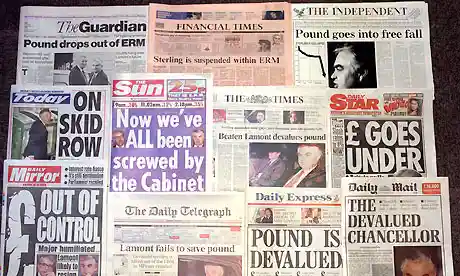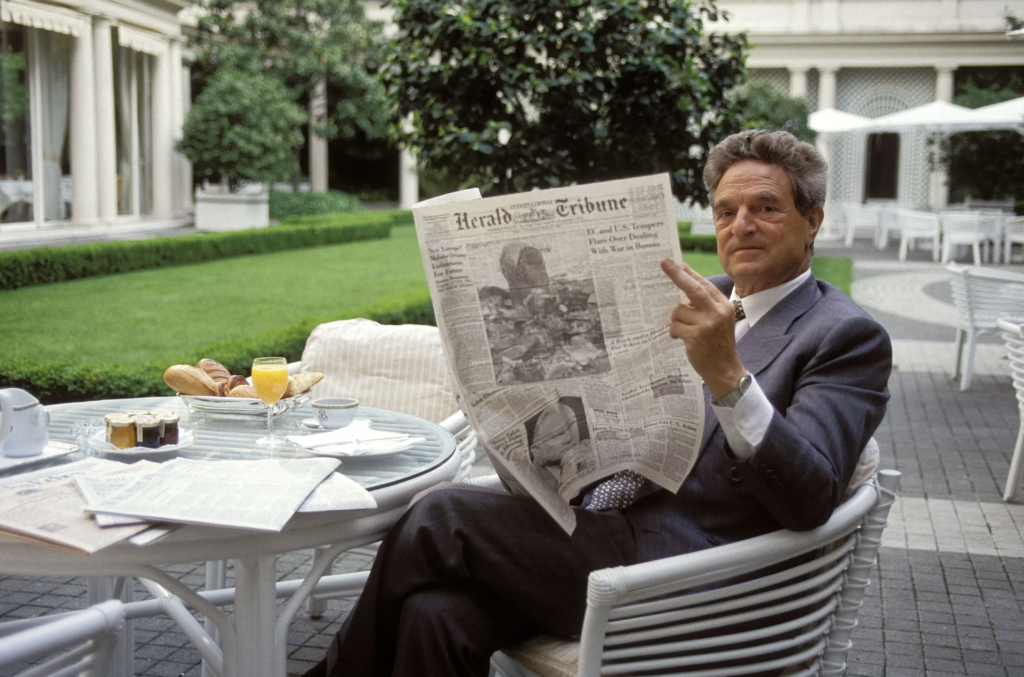One of the most prominent days in the history of Britain is Black Wednesday, the day George Soros imprinted his name in history as the man who broke the Pound.
Black Wednesday occurred on September 16, 1992, when the British government was forced to remove the British Pound from the European Exchange Rate Mechanism (ERM).
This article explains the timeline of events that led to George Soros shorting the Bank of England.

The Bank of England and the History of the Exchange Rate Mechanism
The history of Black Wednesday in Britain started right after World War II. The consequences of the war left several governments with less thriving economies to work on.
Some European countries decided to work together to build a better economy and consolidate their powers.
The strategy was to establish trade relations and be ready to lend a helping hand to one another if another war ever occurred.
To this effect, France, Italy, the Netherlands, Belgium, Luxembourg, and West Germany formed a union in 1951.
They formed the European Coal and Steel Community and signed the Treaty of Paris in a bid to ensure good trade and diplomatic relationships.
Further, the European Coal and Steel Community established the European Economic Community (EEC), which the United Kingdom joined in 1973.
After some years, members of the EEC proposed the idea of a single currency for Europe to empower the economies of the countries. However, they hit a wall when they were hesitant to give up their individual country’s currency.
After much negotiation, in 1979, the EEC formed the Exchange Rate Mechanism (ERM), which necessitated that all member countries must fix an exchange rate with the currencies of other member countries.
The ERM and the Euro
After establishing the Exchange Rate Mechanism, the member countries of the EEC realized how profitable the ERM was and decided to proceed with the initial idea of creating a unifying currency.
In 1991, a new currency for countries in the ECC emerged, called the Euro. Before the currency was released, the ECC had to lessen exchange rate variability and ensure stable monetary policies.
Germany had the strongest economy; hence, each country in the ECC tied the value of their currency to the Deutschmark.
Events Preceding Black Wednesday
Although the UK was a member of ECC, they were yet to join the ERM system until they saw it as a way to strengthen the Pound.
From 1988 to 1990, the UK battled inflation which rose to 10% from 3% in those two years.
The country placed the Pound into the ERM, expecting the Pound to stabilize.
Britain had to tie the Pound’s value to the Deutschmark like other countries. However, placing the economy of Britain beside Germany was difficult because inflation in the UK was about three times higher than in Germany.
In addition, interest rates in the UK had reached 15%, and signs of an incoming recession were looming.
The UK set the Pound’s value at 2.95 Deutschmark with a 6% error margin meaning it could rise to 3.13 or dip to 2.78 Deutschmark. However, the UK couldn’t keep the pound stable as the economy eased into a recession.
Usually, banks lower interest rates to help the economy and control recessions.
However, lowering interest rates causes the value of currencies to plummet. So for the UK to stick to the ERM, they had to find a way to keep the pound stable.
To do this, the Bank of England had to buy pounds and drive up the currency’s value, and it was this process that George Soros leveraged on Black Wednesday.
Black Wednesday 1992 Explained
For two years, from 1990 to 1992, the Bank of England spent billions on buying the Pound to retain its value and stabilize the price.
Many forex traders had already noticed the Pound’s volatility and had started shorting it extensively.
The bank kept buying the Pound from the forex market to keep its price afloat. George Soros wasn’t the only currency trader that made huge profits from shorting the Pound, but he was the one that made the most.
And he was able to orchestrate this win head-on with the Bank of England.
It wasn’t a direct battle between the Bank of England and Soros but one that was fought on the forex exchange scene.
The bank’s plan was to buy back the currency anytime it fell, and this was the exact plan George Soros used to make his fortune.
Black Wednesday finally arrived on September 15, 1992. George Soros started to short the Pound aggressively, causing the value to dip rapidly.

As soon as the market opened on September 16, the Pound was already falling, and the Bank of England started buying its currency to dissuade the bearish sellers. But George Soros kept shorting the Pound over and over.
The bank tried another strategy to prevent sellers from shorting the Pound; they increased the interest rates from 10 to 12 to 15%, but the traders were not moved.
By the end of the whole trading war, the Pound had lost 9.5% of its value, the Bank of England lost £3.3 billion, and George Soros had shorted more than $10 billion worth of Pound and walked away with over $1 billion as profit.
George Soros and the Bank of England
George Soros wasn’t the only trader that shorted the British Pound, but he stood out as the one who shorted with the most amount and made the biggest profit.
The event of Black Wednesday in Britain’s history remains significant and is frequently referred to from time to time.
Although the incident had a heavy impact on the British economy and the Bank of England, the UK has since recovered from the effect of Black Wednesday.

